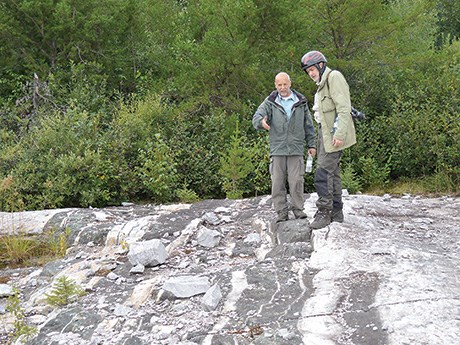Avalon Advanced Materials plans feasibility study for 2017
The alarm bells for the oil industry are still barely audible, but Don Bubar, president and CEO of Avalon Advanced Materials, knew they were going to get louder when close to 400,000 people put down a $1,000 deposit for Tesla’s’s Model 3 sedan.
Increased demand for lithium, a major ingredient in electric vehicle batteries, has given Avalon Advanced Materials’ Separation Rapids lithium project in northwestern Ontario a new lease on life after 20 years of sitting idle.
“We first stared working on Separation Rapids in the late 90s just after it had been discovered by a geologist working for the Ontario Geological Survey – Fred Breaks,” recalled Bubar.
“It was staked by a local prospector and we optioned it. At that time, the battery market was in its infancy, so it was a bit too early to contemplate serving that market. Where we saw an opportunity was to produce a lithium mineral called petalite, an industrial mineral used to make thermal, shock resistant ceramic products such as Corningware, cookware and stovetops.
“Unfortunately, that didn’t play out the way we hoped. We thought we were going to be able to serve that market in North America, but the market changed on us when production moved to China.
“We had to be patient with it. We didn’t think we would have to be patient for 15 years, but it goes to show you that with these market commodities, you have to be ready and able to move a project forward when new demand comes into the marketplace – and that’s what’s happened in the last few years with the surging demand for lithium.”
The Separation Rapids project, located approximately 60 kilometres north of Kenora, has a resource of close to 10 million tonnes grading 1.34 per cent Li2O.
In October 2016, the junior miner announced the completion of a positive preliminary economic assessment (PEA) confirming the technical viability and economics of producing a battery-grade lithium hydroxide product.
The PEA estimated a mining rate of 950,000 tonnes per year yielding 14,600 tonnes of lithium hydroxide for 10 years and 100,000 tonnes per year of feldspar, an industrial mineral with a variety of applications.
By way of comparison, Tesla’s lithium battery Gigafactory in Nevada is expected to consume 25,000 tonnes of lithium hydroxide per year.
The capital cost for construction of a mine at the Separation Rapids project is estimated at $514 million.
The deposit is a near surface vertically oriented tabular orebody amenable to open pit mining for five or 10 years. At some point, though, it would be necessary to go underground.
There would be a mill and concentrator onsite, but a second plant would be required to produce the lithium hydroxide.
Kenora would certainly welcome such a plant, said Bubar, as it is “very interested in seeing a whole new industrial sector emerge there.
“Lithium carbonate has been used for battery cathode chemistries for some time, but what’s happening now is different chemistries are requiring different types of lithium compounds and lithium hydroxide is one of the new forms of lithium that is in demand, particularly for automotive applications,” said Bubar.
Separation Rapids lithium is very pure, making it highly desirable for producing a high purity derivative product.
Avalon Advanced Materials spent the last year developing a new process flowsheet to extract a lithium hydroxide product from high purity lithium petalite, and successfully demonstrated it at laboratory scale.
“That’s where we are now,” said Bubar. “The next step is to do pilot plant type work and scale it up to confirm the process and the economics of it and secure customer acceptance that will ultimately lead to contracts. That’s a really important part of the business and very different from traditional base and precious metals mining in that lithium is not an exchange traded commodity. Lithium products for batteries are specially engineered chemical products that you have to get accepted in the marketplace and develop a market for.”
The junior miner hasn’t had to do work on the site itself in the last year. Thirty tonnes of material was used for process development work, but it came from a bulk sample that was in inventory in Kenora.
“There’s more work to be done on drilling to see how big this resource could ultimately be, but there wasn’t much point in doing that until we were satisfied we could produce a competitive product to serve the battery market,” said Bubar. “We’d like to go back and do some more drilling to step out from where we left off because we never found an end to the resource. Now that the market has grown, it would serve our interest to see how big it could be.”
There’s no shortage of primary lithium in the world, said Bubar.
“That’s the good news for the world as we move into this energy storage revolution. We’re not going to run out of lithium.
It’s a matter of finding the best quality product. That’s why at the end of the day, it’s more about purity and how you process the material you find than how much there is in the ground. It’s not a traditional mining business. It’s more akin to a manufacturing business with a mining component on the front end.”
A feasibility study is planned for this year.



.jpg;w=120;h=80;mode=crop)